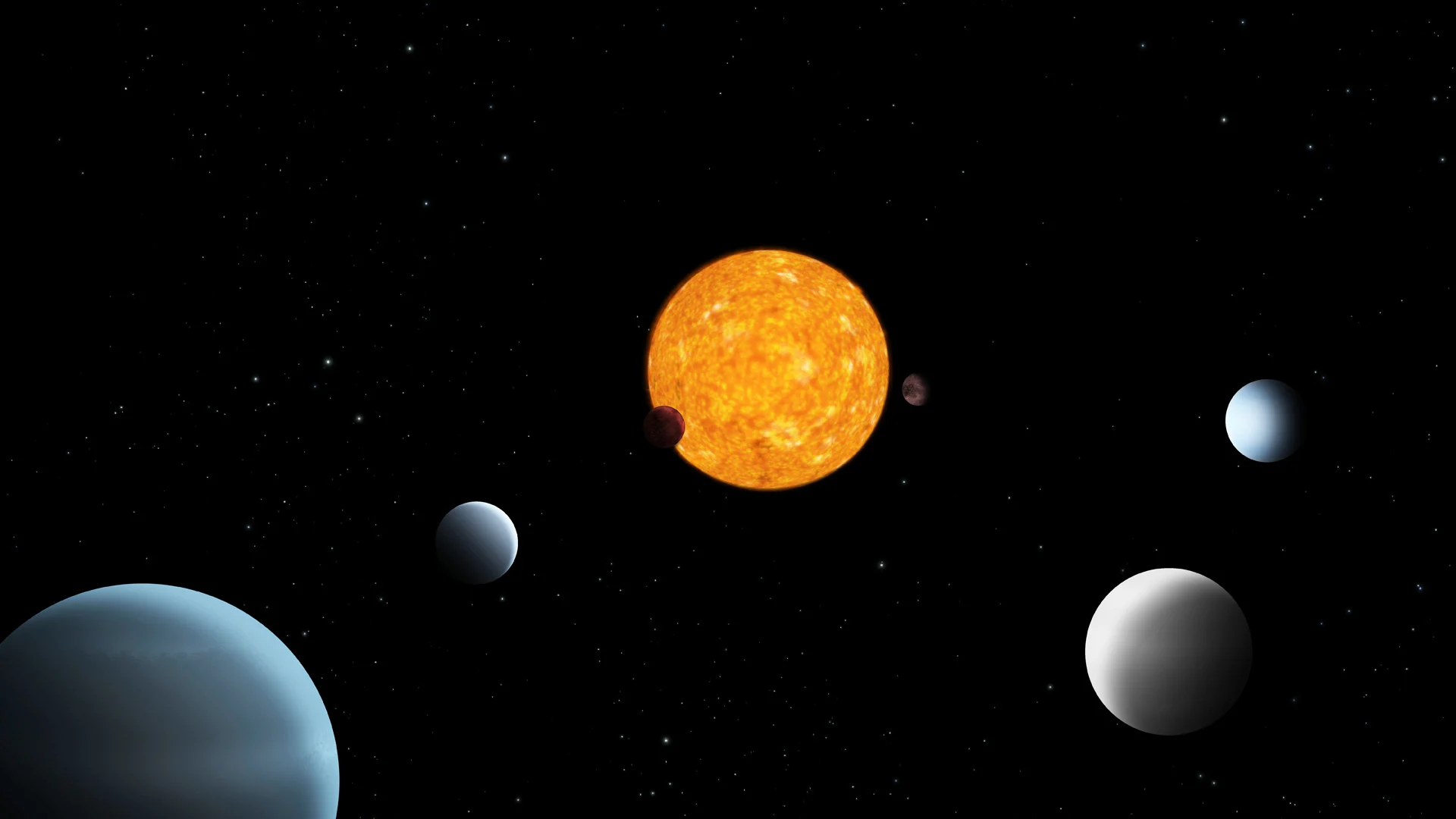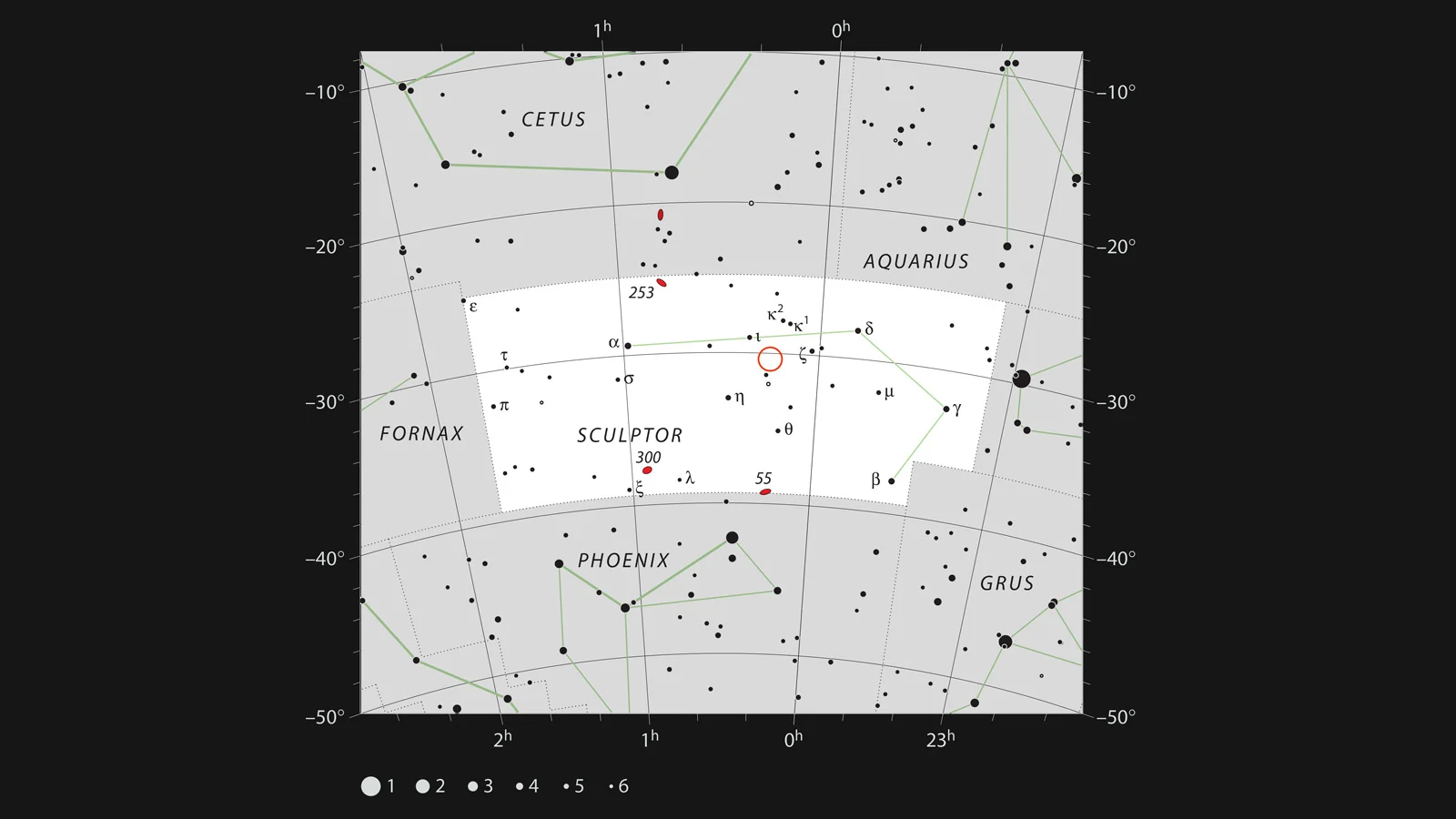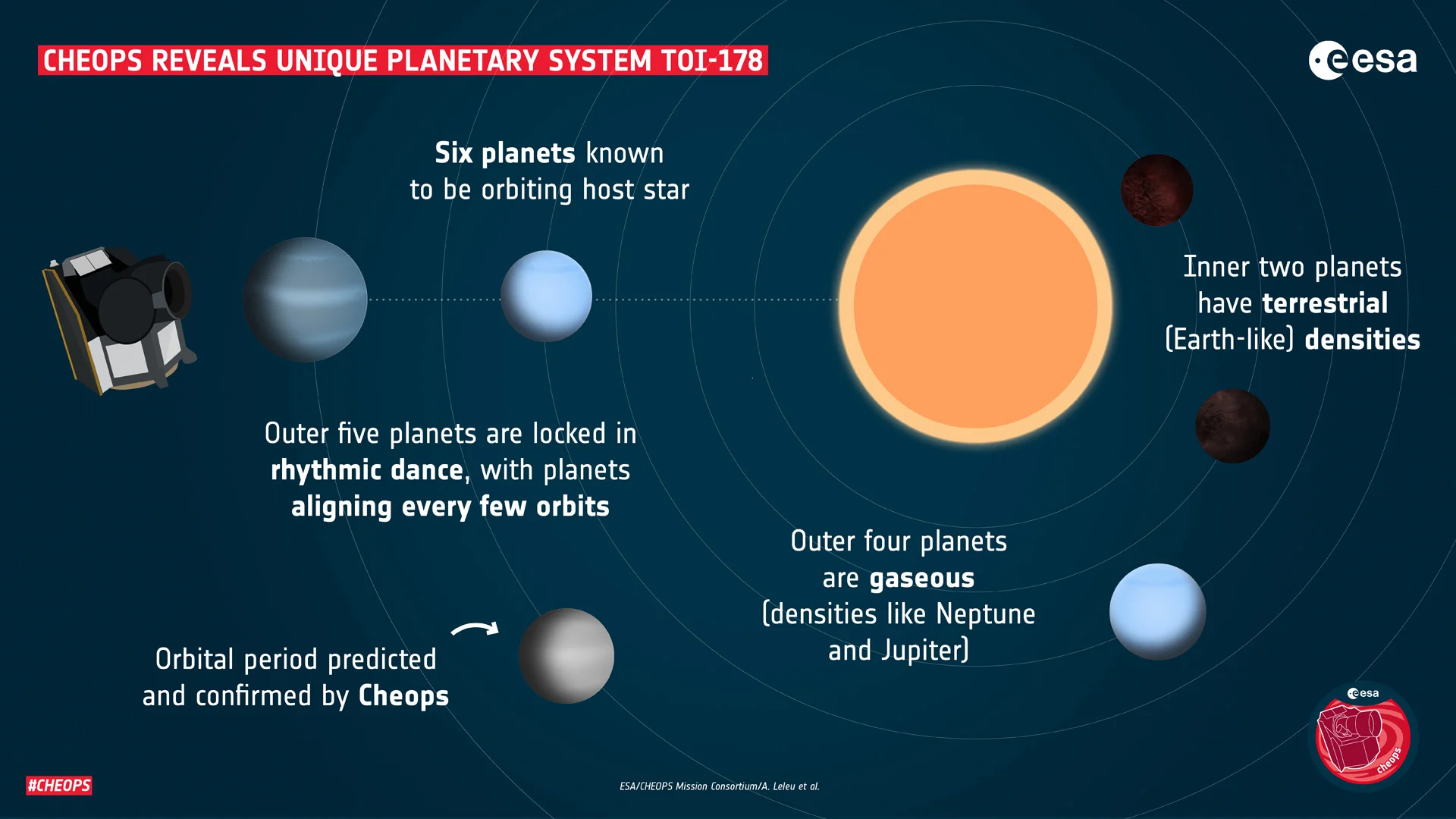
Unique family of alien worlds found locked in an orderly resonance 'dance'
The orderly dance of this disorderly collection of worlds challenges assumptions about how planet systems form
Astronomers have discovered a planetary system that has only gotten stranger the more they have looked at it.
In the southern constellation of Sculptor, a nondescript orange star was flagged by NASA's Transiting Exoplanet Survey Satellite (TESS) after the telescope spotted the tell-tale signs that planets were orbiting around it. TOI-178, as it came to be called, is a bit smaller and dimmer than our Sun. Observations by TESS recorded evidence for 'transits' — when the star's light dims slightly as a planet passes in front of it — of at least one planet, or perhaps two.
According to the European Southern Observatory, these TESS observations initially pointed to two planets circling the star in the same orbit.

The location of the star TOI-178 (red circle), in the constellation Sculptor. Credit: ESO, IAU and Sky & Telescope
Such a 'twin planet' would be a strange enough discovery, indeed! If two large planets begin forming in the same orbit, our current reconning says they would smash together and merge, fairly early in their development. Having a twin planet survive would require them to settle into an orbit with each on exactly opposite sides of the star from each other. So far, astronomers have not found any examples of this. It is still something that exists only in the realm of science fiction.
A further investigation of the TOI-178 system using the ESA's orbiting Characterizing Exoplanet Satellite (CHEOPS), led by astrophysicist Adrien Leleu, made the discovery even weirder and more interesting, though. It wasn't two planets, but six!
"This result surprised us, as previous observations with the Transiting Exoplanet Survey Satellite of NASA pointed toward a three planets system, with two planets orbiting very close together. We therefore observed the system with additional instruments, such as the ground based ESPRESSO spectrograph at the European Southern Observatory (ESO)'s Paranal Observatory in Chile, but the results were inconclusive," Leleu said in a University of Bern press release. "After analyzing the data from eleven days of observing the system with CHEOPS, it seemed that there were more planets than we had initially thought."
The study led by Leleu was published on Monday in the journal Astronomy & Astrophysics.

This artist impression shows the basic configuration of the TOI-178 planetary system, with two rocky innermost worlds and four gas giants in the outer orbits. Credit: ESA
So, this isn't just two planets, or three, but a 'family' of six planets, orbiting so close to their star that they could all fit inside the orbit of Mercury. While the rocky innermost planet takes around 1.9 days to orbit the star, the outermost mini-Neptune world completes an orbit in roughly 20.7 days. For reference, Mercury takes just under 88 days to go around the Sun.
The close-knit grouping of TOI-178's planets is, on its own, very interesting. What truly sets this planetary system apart, though, is the unique rhythmic 'dance' that has resulted from their proximity to one another. As the outer five planets orbit around the star, they come close enough together that their mutual gravitational tug on each other has caused them all to settle into a very specific orbital pattern.
When you look at each of these five planet's exact orbital periods, they appear to be just a collection of random numbers — 3.23845 days, 6.5577 days, 9.96188 days, 15.23191 days, and 20.7095 days. Compare them directly to each other, though, and out pops a very precise rhythm, which can be seen in the embedded video below. Listen with sound on to hear the 'music' of their orbital dance, as a 'ping' goes off with each planetary alignment.
The 'resonance chain' the planet's follow is an exact 18:9:6:4:3 pattern, like clockwork. So, for every 18 orbits of the second planet (TOI-178c), the third (TOI-178d) orbits 9 times, the fourth (TOI-178e) orbits six times, the fifth (TOI-178f) orbits four times, and the sixth (TOI-178g) orbits three times.
The only planet left out of this precise orbital 'dance' is the innermost one, TOI-178b.
ORDERLY DISORDER
An added strangeness that makes this system truly unique is that the orbits' orderly arrangement does not appear to extend to the types of planets represented in this system.
"It appears there is a planet as dense as the Earth right next to a very fluffy planet with half the density of Neptune, followed by a planet with the density of Neptune," says study co-author Nathan Hara, from the University of Geneva. "It is not what we are used to."

This schematic drawing shows the organization of the resonances and densities of this unique planetary system. Credit: ESA/Cheops Mission Consortium/A. Leleu et al.
"This is not what we expected, and is the first time that we observe such a setup in a planetary system," Leleu said in an ESA press release. "In the few systems we know where the planets orbit in this resonant rhythm, the densities of the planets gradually decrease as we move away from the star, and it is also what we expect from theory."
"This contrast between the rhythmic harmony of the orbital motion and the disorderly densities certainly challenges our understanding of the formation and evolution of planetary systems," Leleu added.
COULD THERE BE MORE?
According to the astronomers who participated in this study, although six planets have been found so far, there's no reason there couldn't be more, farther away from the star.
Using CHEOPS, further observations could expand this system and reveal it to be even stranger than we know it to be now.
"We might find more planets that could be in the habitable zone — where liquid water might be present on the surface of a planet — which begins outside of the orbits of the planets that we discovered to date," Leleu told the ESA. "We also want to find out what happened to the innermost planet that is not in resonance with the others. We suspect that it broke out of resonance due to tidal forces."










